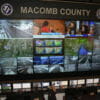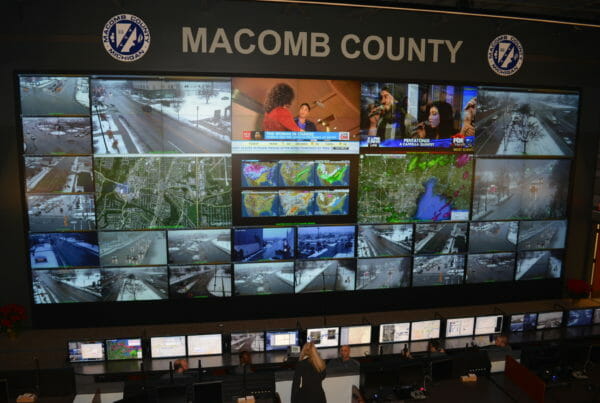The huddle room has become a must-have in the modern workplace. A huddle room is basically a small and private meeting area within an office that’s designed for impromptu chats and connecting with remote team members. This type of meeting space is ideal for businesses with limited space and those in the hybrid and remote working world. A well-designed huddle space doesn’t just need to look good – it should be tailored to your team’s needs and help to make the work environment more productive and enjoyable. Here are a few tips to help you create the ultimate huddle room for your workplace:
Huddle Room Tech Essentials
 The ideal huddle room should be a space where your team can meet quickly without any complicated setup. It should also be equally accessible to all team members no matter where they are located. If you’re in the beginning stages of designing your huddle room, start with the basics:
The ideal huddle room should be a space where your team can meet quickly without any complicated setup. It should also be equally accessible to all team members no matter where they are located. If you’re in the beginning stages of designing your huddle room, start with the basics:
1. Display
Generally, huddle rooms are designed as wireless BYOD (bring your own device) spaces which allow team members bring in their own devices: like laptops and smart phones. One of the best things to have in a huddle room is an interactive display that has the ability to easily connect to everyone’s devices. Depending on the size of your huddle space, a 40-50″ monitor is all you should need for a smaller space.
2. Audio
Good quality audio is essential when it comes to any meeting space. Think of the instant anxiety you feel when you’re in the middle of a presentation or thought and your co-workers say “you’re cutting out!” You can avoid common audio issues by following a few best practices:
- Stretched bandwidth can make audio quality suffer so make sure your huddle room has a strong connection.
- Minimize audio distractions such as background noise by investing in an AI-enhanced audio device equipped to cut out unwanted noise.
3. Smart Cameras
Most huddle rooms are small, but still require a field of view wide enough to encompass all meeting participants, as well as any other important visual information. Smart cameras are a great option as they have the ability to recognize who is speaking in the room and automatically focus on them. This type of technology enables a much better experience for those who may be joining remotely.
4. Connectivity
Keep in mind that not everyone who utilizes your huddle room is going to be tech savvy. Avoid the confusion around figuring out which cable goes to what by utilizing wireless connectivity. Consider outfitting your huddle room with an easy-to-use console such as the Crestron Mercury.
Huddle Room Design Best Practices
Once you have all of your tech essentials in place, it’s time to start thinking about the design of the space. This is going to vary depending on the size of your office and how many huddle rooms and conference room you plan to have. If you’re planning to have multiple huddle rooms, you may want to consider different designs for different spaces (maybe even with different themes). One huddle space could be outfitted with a comfortable sofa and beanbag chairs to promote brainstorming and creativity while another huddle space could have more traditional furniture with a small table, chairs and a whiteboard. Here are a few more items to consider while designing your huddle room:
Soundproofing
It’s important to soundproof your huddle room for more than just peace and quiet. This will allow your team to stay focused, increase productivity, and keep the conversations in that space confidential.
Accessibility
Typically huddle rooms are meant to be more casual spaces that do not require booking. With a lot of offices turning to more open floor plans, it’s important to provide a space that can be utilized for impromptu face-to-face meetings or private conversations. If your office does have an open floor plan, consider creating multiple huddle rooms throughout the office that are openly accessible to everyone.
Ready to Upgrade your Workplace?
Workplace technology can be a difficult thing to navigate, but our approach is simple: help you make sense of what’s available and deploy a system that will be adopted by even the most non-technical users. Connect with our workplace technologists today to get started!












